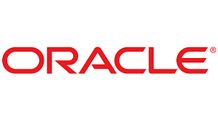Report: The Future of Healthcare
Sector: Healthcare
Publication Date: 2020
Kieran Murphy, Global CEO of GE Healthcare
GE Healthcare has developed NASA-style command centres for hospitals allowing them to monitor critical data in real time to ensure efficient patient care. Kieran Murphy, Global CEO of GE Healthcare, talks about the benefits of artificial intelligence while sharing his vision of the digital healthcare transformation.
What have your priorities been since taking over the reins in 2017?
GE Healthcare is one of the largest medtech equipment and services companies in the world. Our products and services are used in the diagnosis, treatment and monitoring of patients, and we have more than four million devices installed with our customers globally, which have provided more than 75 billion patient images.
My key priority is to help improve results for patients and productivity at hospitals, clinics and research institutes around the world. We support our customers in the pursuit of precision health: healthcare that is joined up across systems, highly personalised to each patient’s needs and that reduces waste and inefficiency.
That means investing in R&D, product development, engineering and customer service. We have invested significantly in digital: launching Edison, our intelligence platform to develop AI applications and software for the healthcare industry, with more than 50 applications already in use. We have AI available on X-ray devices that enables radiologists to prioritise patient scans, meaning those with the most pressing needs get seen first, and we have Command Centres that help hospitals predict bottlenecks before they’ve even happened. These are real, tangible improvements that make a difference.
Where do you anticipate the main challenges ahead for healthcare provision? And how is GE Healthcare positioning itself to respond to them?
The way healthcare works today is unsustainable. The cost of providing healthcare keeps going up, outcomes don't get better. It's estimated that there's $1 trillion of waste in the US market alone. Why is that? Late diagnosis, misdiagnosis and treatment with the wrong medicine are key reasons.
If we can diagnose earlier, better or faster using our medical devices and AI, we are far better positioned to have precise diagnosis. We are also partnering on research to more accurately identify patients for clinical trials.
Another challenge is that data from medical imaging and blood tests is fragmented across health systems. Every single healthcare system says, "I am swimming in data. There is so much data. I have no insight”. We want to integrate those data sets. We work with industry, universities and customers around the world to help solve that challenge to lead to more precise therapy.
A more fundamental challenge is that today, two out of three people in the world still do not have access to medical imaging. We see this as an incredibly important opportunity to improve health, meet governments’ healthcare agendas and deliver better and faster outcomes for patients.
In this era of rising public expenditure, rising demand and overstressed budgets, what role has GE Healthcare been playing in re-thinking healthcare pathways to achieve more with less?
Digital is having a major impact on healthcare. It unlocks great growth potential and improvement for patient outcomes. As one of the largest generators of healthcare data through our medical devices, we’re well-placed to help shape the future of the industry using advanced analytics and artificial intelligence.
One of the biggest innovations we’ve developed in recent years to help hospitals improve efficiency and productivity are Command Centres – control rooms at the heart of a hospital system that monitor critical data sets in real time to help improve performance. We have nine installed globally, with interest for many more. Command Centres are helping to reduce patient waiting time in the emergency department, improve ambulatory care, predict patient demand and, importantly, free up bed capacity. These results can be achieved without recruiting new staff or additional resources.
What do these command centres look like in practice and what is the underlying science behind them?
I liken the Command Centre to an air traffic control system for the entire hospital. It provides staff with collated, real-time information to help them make speedy and informed decisions on managing patient flow and coordinating care for every patient across the whole hospital system.
To give one example of the benefits, since the Command Centre at Humber River Hospital in Toronto, Canada opened in 2017, the hospital has added the equivalent of 35 beds, without increasing infrastructure or adding staff.
Can you give some tangible examples of how command centres are managing to (1) bring consistency to processes; (2) better prioritize actions; (3) anticipate tomorrow’s pressure points & mitigate bottlenecks?
Bradford in the UK isa busy acute-care hospital with up to 400 patients coming through A&E (the Emergency Department) each day. Their Command Centre is transforming how care is delivered and organised - resulting in faster ambulance transfer times, patients moving through hospital faster and more efficiently without unnecessary delays, getting home quicker and fewer cancelled operations.
Because staff have a single, accurate picture of activity and live, actionable information they spend less time looking through IT systems for relevant information. It allows persistent problems to be addressed and patterns and themes to be flagged up and prioritised.
How can GE Healthcare help as we work towards the digital transformation of healthcare?
AI could have the most profound benefit on human lives if we can effectively harness it across the healthcare system, from increasing efficiency to improving patient outcomes. AI can help us see more, and diagnose more accurately, faster. Paradoxically, it also may help to make healthcare more human, by freeing clinicians up from routine tasks so increasing the amount of time they can spend with patients.
To help drive this transformation across the industry. we are integrating AI into our imaging and monitoring equipment. Bringing together medical device and digital capabilities, the clinical and healthcare knowledge, combined with our deep relationships and long history in the healthcare industry, gives us an important role to play in driving the future of health around the world. We also created Edison – a secure intelligence platform designed specifically for the needs of healthcare – to help our customers stitch together various digital technologies, data across the health systems and devices. The Edison platform helps us and select strategic partners to design, develop, manage, secure and distribute applications and AI algorithms quickly.
To give just one recent example, we recently received FDA clearance for a collection of AI algorithms embedded on a mobile X-ray that is designed to quickly identify and help prioritise critical cases such as pneumothorax, a type of collapsed lung – built using the Edison platform.
Together with MIT Technology Review, we recently released a study of more than 900 healthcare professionals in the US and the UK. Nearly half said AI is already increasing their ability to spend time with patients. Additionally, more than 78% of healthcare leaders who have deployed AI said that it helped deliver significant efficiencies.
As the big data giants increasingly move in on the healthcare space, where does that leave companies like GE?
No one organisation can solve the challenge of making healthcare fully connected. GE Healthcare is bringing together leading technology providers, developers and academic institutions to help our customers – who between them hold more than 4 million pieces of GE medical equipment and have more than 75 billion images under management - unlock their data and employ intelligence in ways that have the potential to create real impact, from better patient outcomes to the bottom line.
We have the depth of knowledge and relationships with the medical community from more than 100 years in the healthcare industry, and we work with Microsoft, Intel, Amazon and others to realise our collective goal of advancing the future of health.
What is the potential for robotics to “change the face of surgery” over the next decade?
Healthcare’s next chapter will be written in part by emerging technologies like robotic surgery. The vision here is simple, yet transformative: change the way surgery is performed worldwide, to make minimal access surgery safe, effective and available to all. Alongside high-quality medical imaging and next-generation AI, robotic systems will become a key ‘guiding companion’ for surgeons.
What sorts of tangible benefits do you envisage to arise from the recent partnership signed with Formlabs (and 3D printing more generally)?
This is a really interesting collaboration. The combination of Formlabs’ affordable 3D printers with GE’s applications that are designed to help quickly create anatomical models from imaging studies can help interventional radiologists to easily use 3D printing to create models right at the point of care.
Physical models help patients to more easily understand their medical diagnosis and give surgeons a model on which to decide the course of action for surgery, which can help reduce procedure time in the operating room.

 Related Content
Related Content
Next-Generation Technologies for Veterinarians
Covetrus has been harnessing digital technologies to assist pet owners in staying on top of the care of their pets by promoting a frictionless engagement with vets and connecting data-driven insights to a pet’s medical record.
Giving Micro-Fabrication a New Meaning
From bio-pacemakers to micro-robots manoeuvring the bloodstream – Lithuanian company Femtika is producing 3D micro- and nano-structures by applying very advanced fabrication techniques. Vidmantas Sakalys, Femtika’s CEO, outlines the company’s plans and shares his view on emerging trends in nanomedicine.
Generics Vital to Reduce Healthcare Costs
Generic drugs are typically cheaper than brand-name pharmaceutical products; they free up healthcare budgets to finance the next wave of innovation and the development of new drugs, says Berit Lindholm, President and CEO of Bluefish Pharmaceuticals.
Advances in Anaesthesia are Supporting Smarter Healthcare
Primex Pharmaceuticals is spearheading a new lean pharmaceutical business model with big plans to expand in paediatrics and orphan pharmaceuticals. Primex’ CEO, Alan Knox, says there’s a huge demand for low-dose but effective anaesthesia products that is currently unmet.
Report Sponsors




























